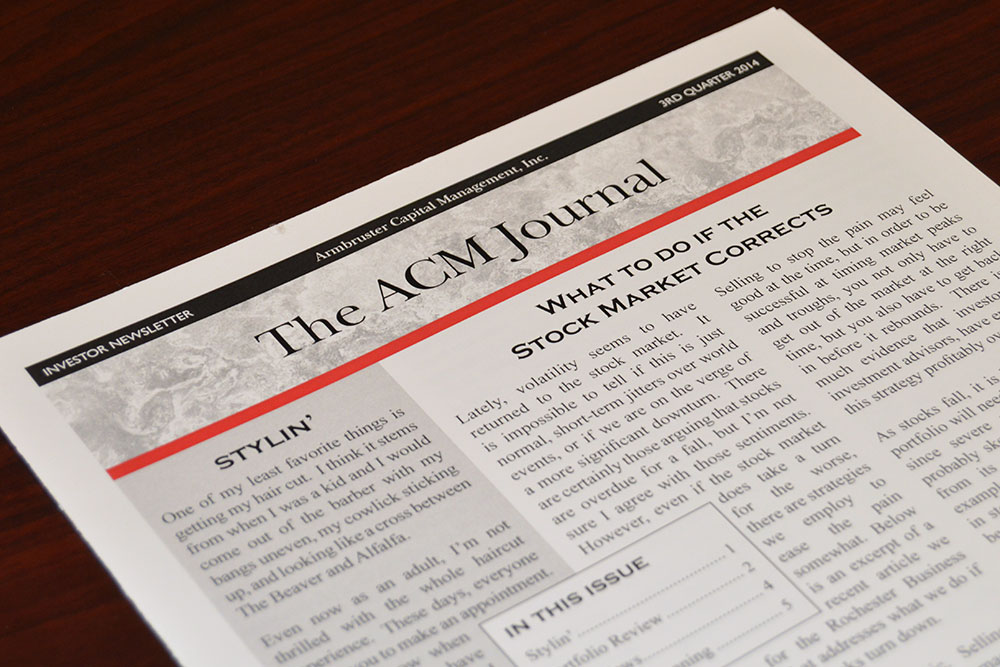What to do if the Stock Market Corrects
Lately, volatility seems to have returned to the stock market. It is impossible to tell if this is just normal, short-term jitters over world events, or if we are on the verge of a more significant downturn. There are certainly those arguing that stocks are overdue for a fall, but I’m not sure I agree with those sentiments. However, even if the stock market does take a turn for the worse, there are strategies we employ to ease the pain somewhat. Below is an excerpt of a recent article we wrote for the Rochester Business Journal that addresses what we do if and when stocks turn down.

First off, don’t panic. Selling at the bottom may cause damage that your portfolio will never be able to recoup. It can be painful to watch your portfolio decline in value, particularly if you are relying on it to meet living expenses. However, ask yourself what has changed as a result of the market’s decline. Are people still going to work? Are companies still trying to earn profits? Is the economy still functioning? If so, there probably is no reason to expect Armageddon. During times of market extremes it may seem like stocks are never going to rebound, but in over 200 years of history, they always have.
Selling to stop the pain may feel good at the time, but in order to be successful at timing market peaks and troughs, you not only have to get out of the market at the right time, but you also have to get back in before it rebounds. There isn’t much evidence that investors, or investment advisors, have employed this strategy profitable over time.
As stocks fall, it is likely that your portfolio will need to be rebalanced, since severe market swings will probably skew your portfolio away from its allocation targets. For example, a portfolio that targets 60% in stocks and 40% in bonds would be roughly only 45% in stocks and 55% in bonds after a 40% decline in stocks and a 5% rise in bonds, similar to what happened in 2008. Clearly, this is a different, and more conservative risk profile than you started with.
To Download the rest of the article and the complete 2014 Q3 Newsletter please click below.

